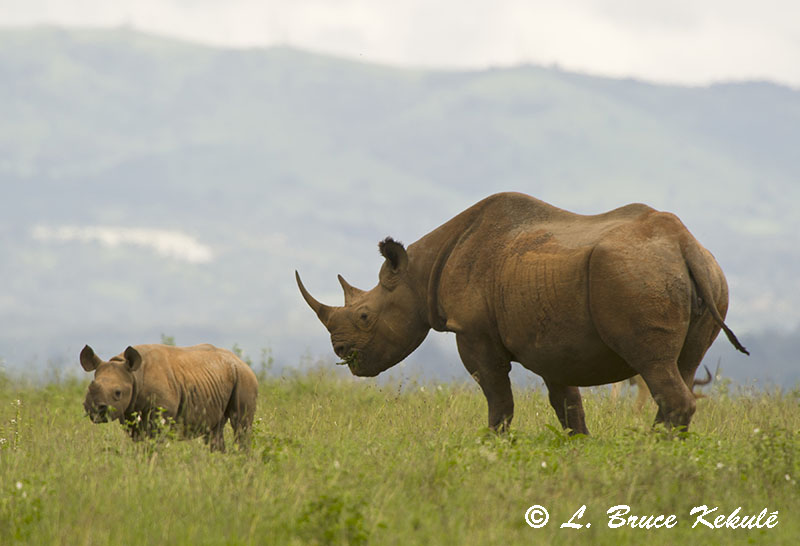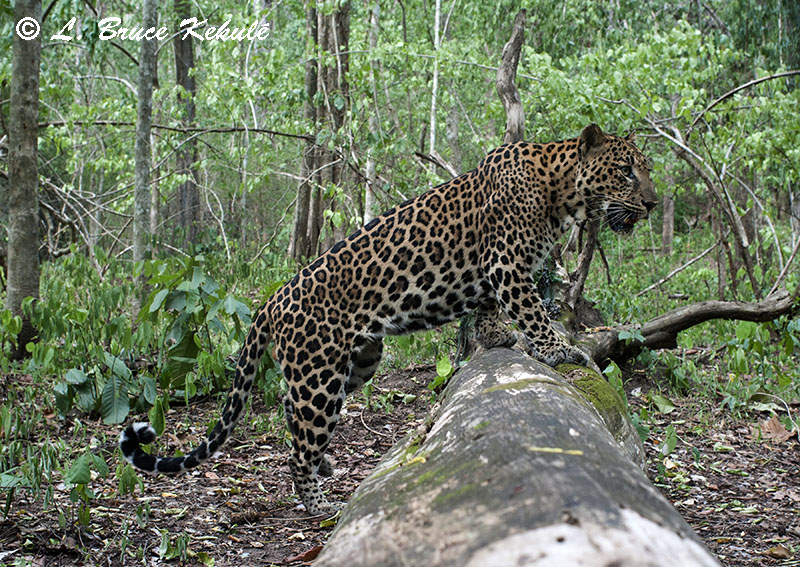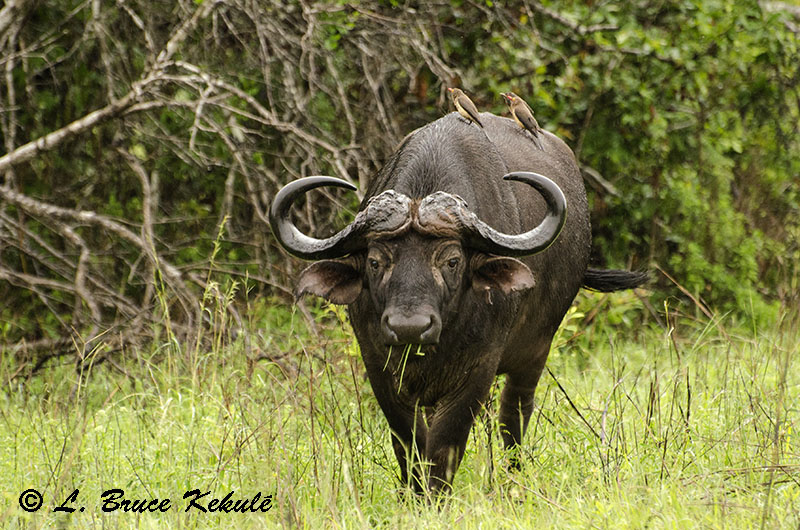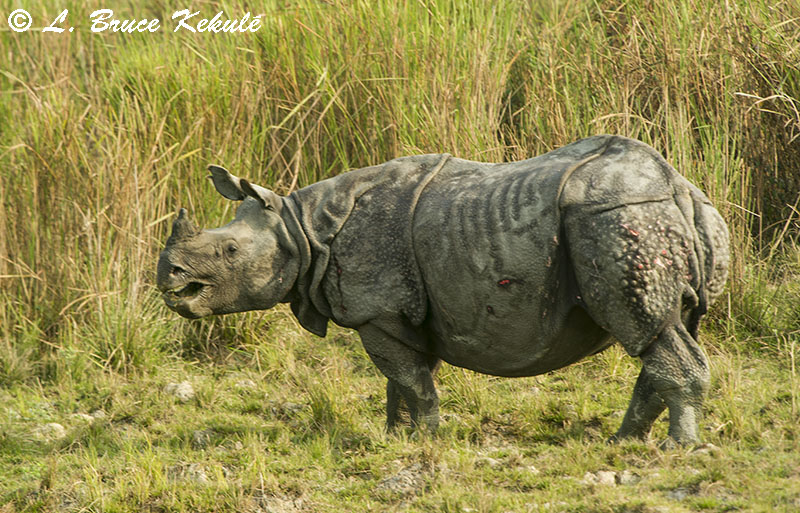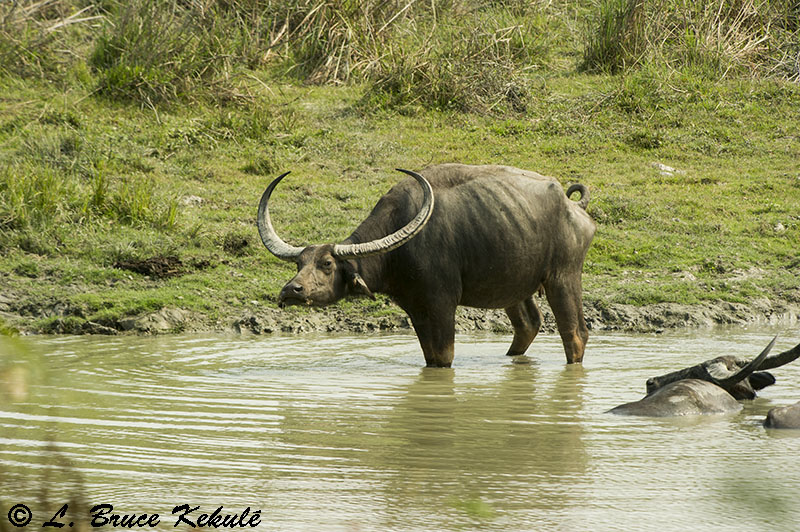Posts Tagged ‘Kenya’s Big Six’
The Big Six: Large Dangerous Mammals of Africa and Asia
Africa’s Big Five…!
The ‘Big Five’ was coined by colonialists in East Africa by the big-game hunters sometime in the 1850s, and was trophies collected from large dangerous mammals taken with a gun. Photography was in its infant stage and very few photographs of wild animals in their natural habitat were around other than pictures of downed animals on the ground with the trophy hunter and gun bearers standing by its side.
Bull elephant in Tsavo West National Park, Kenya, during the late afternoon. This huge bull came real close to the car but passed by without incident. This was the largest tusker I had ever seen on my four safaries through 11 protected areas. Truly, a ‘wildlife icon’ of Kenya’s natural heritage. Taken with a Nikon D7000 and a 70-300 VRII lens @ 116mm. Offhand through the window.
Many rich and famous people went on safari to the ‘Dark Continent’ as it was called back then including Theodore Roosevelt, President of America and Queen Elizabeth II of Britain, plus many Hollywood movies stars like Clark Gable, Ava Gardner, Grace Kelly and Stewart Granger. Going on safari was big business just after the turn of the 20th century, and usually only the ‘well-to-do’ could afford such a journey. They came from all around the world to hunt the large animals that were thriving in great numbers on the savannas and in the bush.
The ‘Big Five’ list consisted of the elephant, rhino (black and white), Cape buffalo, lion and leopard. Most hunters used large caliber rifles to bring down these mighty beasts as trophies to be hung on a wall, or a rug on the floor in the office or home. Other parts of some creatures ended up as trash cans, ashtrays, lampshades and jewelry to name just a few. This was way before cameras came into vogue to capture these animals on film and eventually digital.
White rhino mother and calves in Lake Nakuru National Park not far from Mount Kenya in the central region. This species is identified by their wide mouth and were reintroduced from South Africa as Kenya had lost most of its rhinos to legal hunting and illegal poaching for the horn. Taken with a Nikon D3s and a Nikon 400mm ƒ2.8 on a beanbag.
Black rhino mother and calf in Nairobi National Park, Kenya. Part of the city of Nairobi is in the background and there are about 60 black rhinos trans-located from South Africa to this park. Taken with a Nikon D3s and a Nikon 200-400mm @ 650mm on a monopod…!
Cape buffalo in Tsavo East National Park, Southern Kenya. Note reddish color of this very mature bull due to red clay found in the area. Buffalo found in other areas of Kenya are mostly black. Taken with a Nikon D7000 and a Nikon 70-300mm VR II lens @ 220mm on a beanbag.
A black-maned lion in Taita Wildlife Sanctuary near Tsavo West National Park. This big cat was caught in the grassland just before the park closed for the day around 5:50pm. It was a lucky encounter. Taken with a Nikon D3s and a Nikon 200-400 VR II lens and a 2X teleconverter for 800mm on a bean-bag.
Leopard in the Masai Mara National Reserve in western Kenya. This big cat was seen and photographed on my very first day while on safari in this protected area. This was a real good start to capture the ‘Big Five’ of Africa as the leopard is the hardest to photograph in the group. Taken with a Nikon D3s and a Nikon 400mm ƒ2.8 lens on a beanbag.
Thailand’s Big Six…!
For the last twenty years, I have photographed all of Thailand’s large mammals including elephant, gaur, banteng, wild water buffalo plus tiger and leopard. It has been an excellent journey and experience for me, and I feel fortunate to have been at the right time and right place to capture these wild animals with my camera.
A tusker by the river in Sai Yok National Park in the Western Forest Complex. This shot was taken while he was fanning himself more than a decade ago and it is doubtful this big elephant is still surviving. Poachers chase after these elephants for their ivory just like everywhere else jumbos live. Taken with a Nikon F5 and a Nikon 500 P manual lens using Fuji Provia 100 slide film.
A small herd of gaur in Khlong Saeng Wildlife Sanctuary in Surat Thani province down in Southern Thailand. These herbivores thrive quite well here in this protected area along the shoreline of Khlong Saeng reservoir. This was taken with Nikon D3 and a Nikon 400 ƒ2.8 lens on a tripod setup in a boat.
Very mature banteng bull and cow at a mineral deposit in Huai Kha Khaeng Wildlife Sanctuary in the Western Forest Complex. These herbivores thrive very well in this protected area and there are estimated that more than 350 are found here. Taken with a Konica Minolta Dynax 7D and a Minolta 600mm lens from a photo blind across the river.
A wild water buffalo cow charging me by the river in Huai Kha Khaeng in the Western Forest Complex of Western Thailand. This female was part of a small herd wallowing in the waterway. Taken with a Nikon D2x and Nikon 400mm ƒ2.8 lens on a tripod mount from a boat-blind.
An Indochinese tiger at a waterhole in Huai Kha Khaeng Wildlife Sanctuary in the Western Forest Complex of Thailand. There are about 200-250 tigers left in the forests in the East and West and some in the South. They are highly sought after by poachers for tiger body parts, bones and pelt. This male tiger was caught by Nikon D700 and Nikon 400mm ƒ2.8 lens from an elevated blind.
An Asian leopard crossing a fallen log in Huai Kha Khaeng Wildlife Sanctuary in the Western Forest Complex of Thailand. This male cat was captured using a Nikon D700 trail camera with a Nikon 35mm lens and two Nikon flashes. These big cats are fairly common in this protected area and both color phases (black and yellow) can be found here.
A black leopard walking in the afternoon sun catching its spots at a hot spring in Huai Kha Khaeng Wildlife Sanctuary in the Western Forest Complex. This mature cat stayed for more than an hour waiting on prey. This was taken with a Nikon N90s with a 500mm ƒ4 lens using Fuji Provia 100 slide film.
Africa’s Big Six…!
Then in 2010, 2011 and 2012, I made four trips to Kenya in Africa and collected images from ten protected areas including the Masai Mara National Reserve that was first on the list, followed by Lake Nakuru, Samburu, Amboseli, Tsavo East and Tsavo West national parks, Taita and Shimba Hills wildlife sanctuaries, Sweetwaters private reserve and finally, Nairobi National Park capturing the ‘The Big Six’ which includes the elephant, rhino, buffalo, lion, leopard and hippo while on safari. The hippo is included in this list because they take a serious toll on humans that get in their way and are one of the most dangerous animals in Africa. Kenya has done a great job in preserving its wildlife heritage and hopefully one day I will return.
Elephant in Taita Wildlife Sanctuary in Southern Kenya between Tasvo East and West national parks. The large mammals in this area are mainly red colored due to the red clay found here. Taken with a Nikon D3s and a Nikon 600mm ƒ4 lens on a bean-bag.
Black rhino male in Nairobi National Park just outside Nairobi city in Kenya. These odd-toed ungulates were introduced from South Africa and now there are about 60 of them found here. Taken with a Nikon D700 and Nikon 200-400mm lens on a bean-bag.
White rhino in Nairobi National Park close to the Nairobi city in the background. These herbivores are now found in good numbers and were also introduced from South Africa. Taken with a Nikon D3s and Nikon 400mm ƒ2.8 lens on a bean-bag.
A Cape buffalo down in Shimba Hills Wildlife Sanctuary near Mombassa, Kenya. Due to the moist evergreen forest with loads of rain found here, the large mammals like buffalo and elephants are dark in color compared to their cousin further north that take on a red hue. Taken with a Nikon D7000 and a Nikon 70-300mm lens on a bean-bag.
A lion cub close to the road at dusk in Tsavo West National Park. These carnivores are found in good numbers here as the prey base is also good. Taken with a Nikon D3s and Nikon 600mm ƒ4 lens on a bean-bag.
A mother leopard in the Masai Mara National Reserve in Western Kenya. These carnivores thrive as prey species is very good in this protected area. Taken with a Nikon D3s and a Nikon 400mm ƒ2.8 lens on a bean-bag.
A male hippo in Tsavo West National Park in Southern Kenya. These huge herbivores live around large waterholes found in the park. They are dangerous mammals and more people die from hippo attacks then all the other big animals put together. Taken with Nikon D3s and a Nikon 600mm ƒ4 lens on a bean-bag.
India’s Big Six…!
India was next on my radar and my first trip happened in April 2013, then again in November 2014 and two trips last year (Feb-Mar & November, 2015). So far, I have visited the most famous protected areas in India consisting of Kaziranga, Ranthambore, Bandhavgarh, Corbett, Tadoba, Kanha, Pench and Satpura national parks and tiger reserves. The ‘Big Six’ list includes elephant, Indian rhino, wild water buffalo, gaur, tiger and the leopard were photographed.
Hunting back in the old days was carried out primarily by the British and India’s Royal Maharajahs, which almost wiped out many species especially the tiger. However, the country has done an amazing job of saving this species from the brink of extinction for people from around the world to see and enjoy. The balance of nature is still fairly intact and these creatures still thrive on the sub-continent in good numbers.
Bull elephant at a waterhole in Kaziranga National Park and Tiger Reserve in Assam State, Northeastern India. There are some 1,000 of these herbivores found in the park. Taken with a Nikon D3s and a Nikon 200-400mm lens on a mono-pod.
A male Indian one-horned rhino in Kaziranga National Park and Tiger Reserve. There are roughly 2,400 rhinos now and is one of the greatest conservation success stories in the world. Some 80 years ago, there were a mere 12 remaining and the Assamese government established a ‘shoot-to-kill’ policy for any poachers found in the park. Taken with a Nikon D3s and Nikon 200-400mm lens on a mono-pod.
A wild water buffalo in a waterhole in the park with huge horns. These herbivores have the largest horns in the world. There are some 1,300 buffalo found here and is one of the largest herds in the world. Taken with Nikon D3s and a Nikon 200-400mm lens on a mono-pod.
A bull gaur in Kanha National Park and Tiger Reserve, Central India. These even-toed ungulates are the largest bovine in the world standing 1.7 meters at the shoulder. Taken with a Nikon D3s and a Nikon 200-400mm lens on a mono-pod.
A male tiger named ‘Wagdoh’ (one-eye) in Tadoba Anhari Wildlife Sanctuary in Central India. There are about 2,400 tigers in India’s protected areas and is the largest population in the world. Taken with a Nikon D3s and a Nikon 200-400mm lens on a mono-pod.
A female leopard in late morning in Tadoba Anhari National Park, Central India. For the most part, leopards are tough to spot in the forests of India. However, luck does come and this beautiful girl posed for my camera on my first morning safari in March 2015. Taken with a Nikon D3s and a Nikon 200-400mm lens on a mono-pod.
In 1995, I began what will be my last profession in life when I picked up a camera some two decades ago. Photographing wildlife is the greatest thing I have ever accomplished in my 70-odd years on the planet. It has been a journey of discovery and rediscovery, and sometimes I wish I could have started wildlife photography when I first came to Thailand in 1964. The jungles and teak forests were absolutely teaming with wild creatures from Asian elephants down to tree shrews. Birds, reptiles, amphibians plus insects and spiders were also found in great numbers.
Conclusion: It is my opinion and utmost worry that some of these ecosystems and large mammals found in Thailand, Kenya and India are in jeopardy from human influences. Certain species have gone into serious decline or have even become locally extinct due to the human population explosion, and expansion into these wild places. Therefore, more is needed to protect and save the natural wonders of ‘Planet Earth’ from annihilation by the human element before it is too late. A thousand percent increase in preservation, forest management, more personnel and rangers on the ground plus more funds is the only answer. But with so many obstacles in the mix, I remain optimistic about wildlife in many forests of the future. As the natural biospheres undergo serious threats and changes to their integrity by humans, the road to extinction is at hand for many.
However, saving wildlife and the protected areas where they live with good security and enforcement must be implemented and is the key to the animal’s future survival in places like Kaziranga National Park in Assam, northeast India. Here, most guards are armed with a .303 service rifle and extreme measures are upheld to the letter; poachers are dealt with swiftly and in a deadly manner in some cases. Because of the stringent rules and protection, there are 2,400 Great Indian rhino, 1,300 wild water buffalo, 1,000 elephant and one of the highest tiger densities in the world with over 100 big cats living in a smallish (840 sq. kilometers) park. Kaziranga is the true role-model for real wildlife conservation around the world in desperate times. As more and more creatures disappear from the wild, tougher rules and regulations is the only way to guarantee their future survival…!




